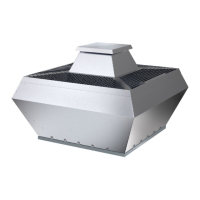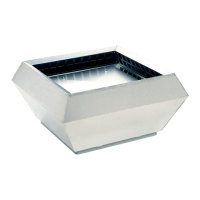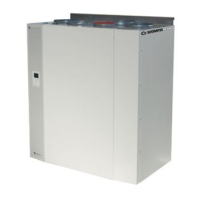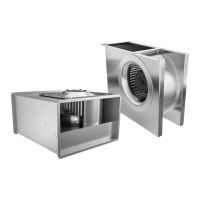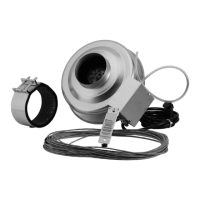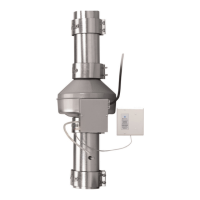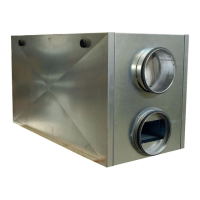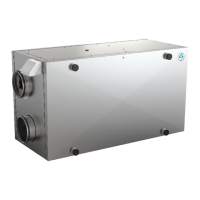7
GB IE
Maintenance, Service and Repair
Always refer to Safety information above before
maintenance, service or repair. Before switching off the fan,
make sure that no EX atmosphere is present. The fan should
be cleaned when necessary, at least 1/year to avoid
imbalance and unnecessary damage to the bearings.
Bearing should be tested against discordant sounds. The
lifespan of the bearings are dependent on running time and
temperature, but should last for at least 40 000 hours.
Replace bearings when the grease has dried out, contact the
supplier. On single phase fans there is a piece of sticky tape
that covers the ventilation openings. If broken the capacitor
must be replaced by a Systemair personnel. A filter will
prolong the time interval between each cleaning of the fan.
Do not use a high-pressure cleaner (steam jet) when
cleaning the fan. Make sure the fan impeller's balance
weights are not moved or the fan impeller distorted. Listen for
abnormal operating noise. Make sure the fan has not been
blocked or that the motor protection has tripped.
Outdoor fans: If a fan is stationary for long periods in a humid
atmosphere, it should be switched On for a minimum of two
hours every week to remove any moisture that may have
condensed.
Repair or exchange of components is not allowed for
ATEX approved products.
Table 1
*
1
) The current may exceed the currents on the nameplate by the ratio (%) given only as long as the total power
consumption does not exceed the value given on the nameplate.
*
2
) Step 1 2 3 4 5
Voltage 230V3~ 80 105 130 160 230
Voltage 400V3~ 90 140 180 230 400
Nameplate Nameplate I
max
Nameplate Min. static back pressure (Pa) Wiring
voltage current when
regulated
power Step
1
*
2
Step
2
Step
3
Step
4
Step
5
diagram
Model (V) (A) (%) *
1
) (kW) Page 2
DVEX 315D4 400V3~ 0,23 0 0,12 (Y)
DVEX 315D4 230V3~ 0,4 0 0,12 (D)
DVEX 355D4 230V3~/400V3~ 0,81/0,47 12 0,26 (D)/(Y)
DVEX 400D4 230V3~/400V3~ 1,31/0,76 12 0,39 (D)/(Y)
DVEX 450D4 230V3~/400V3~ 2,46/1,42 6 0,72 (D)/(Y)
DVEX 500D6 230V3~/400V3~ 1,50/0,87 0 0,38 (D)/(Y)
DVEX 560D6 230V3~/400V3~ 2,13/1,23 5 0,62 (D)/(Y)
DVEX 630D6 230V3~/400V3~ 3,72/2,15 0 1,07 (D)/(Y)
a
b
c
d
e
f
g
h
i
Explanation name plate, Fig. 3
- EU Free trade
- Notified body number for SP
- Logo for explosion proof material
- Explosion group II (also IIA, IIB and IIC)
- Category 2 ~ zone 1 ~ Flammable material present occasionally during normal usage. Additional sign placed
over the name plate has The products item number/ manufacture number/ date for manufacturing.
- Explosion proof material
- Certificate number
- Temperature class, max. surface temperature for fan 200 degrees can be used for gas mixtures with ignition
temperature exceeding 200
°C
- Class of protection ~ high safety
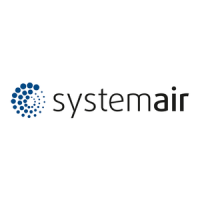
